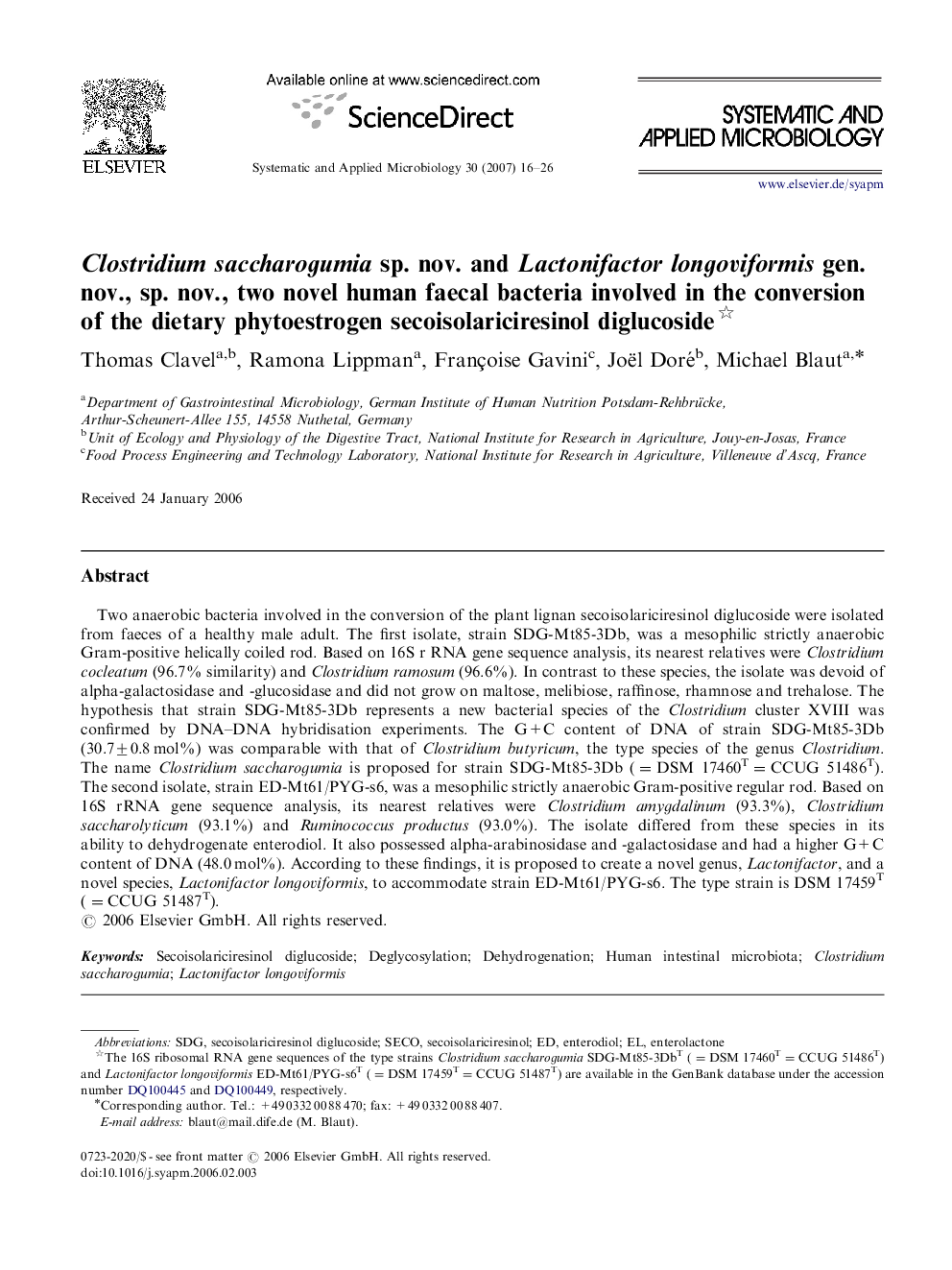| کد مقاله | کد نشریه | سال انتشار | مقاله انگلیسی | نسخه تمام متن |
|---|---|---|---|---|
| 2063498 | 1076682 | 2007 | 11 صفحه PDF | دانلود رایگان |

Two anaerobic bacteria involved in the conversion of the plant lignan secoisolariciresinol diglucoside were isolated from faeces of a healthy male adult. The first isolate, strain SDG-Mt85-3Db, was a mesophilic strictly anaerobic Gram-positive helically coiled rod. Based on 16S r RNA gene sequence analysis, its nearest relatives were Clostridium cocleatum (96.7% similarity) and Clostridium ramosum (96.6%). In contrast to these species, the isolate was devoid of alpha-galactosidase and -glucosidase and did not grow on maltose, melibiose, raffinose, rhamnose and trehalose. The hypothesis that strain SDG-Mt85-3Db represents a new bacterial species of the Clostridium cluster XVIII was confirmed by DNA–DNA hybridisation experiments. The G+C content of DNA of strain SDG-Mt85-3Db (30.7±0.8 mol%) was comparable with that of Clostridium butyricum, the type species of the genus Clostridium. The name Clostridium saccharogumia is proposed for strain SDG-Mt85-3Db (=DSM 17460T=CCUG 51486T). The second isolate, strain ED-Mt61/PYG-s6, was a mesophilic strictly anaerobic Gram-positive regular rod. Based on 16S rRNA gene sequence analysis, its nearest relatives were Clostridium amygdalinum (93.3%), Clostridium saccharolyticum (93.1%) and Ruminococcus productus (93.0%). The isolate differed from these species in its ability to dehydrogenate enterodiol. It also possessed alpha-arabinosidase and -galactosidase and had a higher G+C content of DNA (48.0 mol%). According to these findings, it is proposed to create a novel genus, Lactonifactor, and a novel species, Lactonifactor longoviformis, to accommodate strain ED-Mt61/PYG-s6. The type strain is DSM 17459T (=CCUG 51487T).
Journal: Systematic and Applied Microbiology - Volume 30, Issue 1, 19 January 2007, Pages 16–26